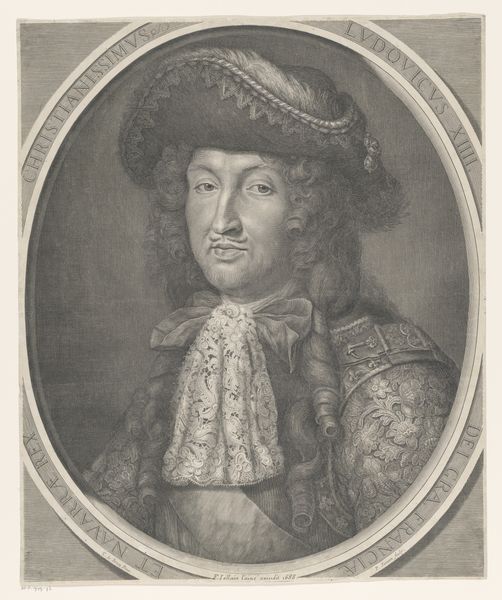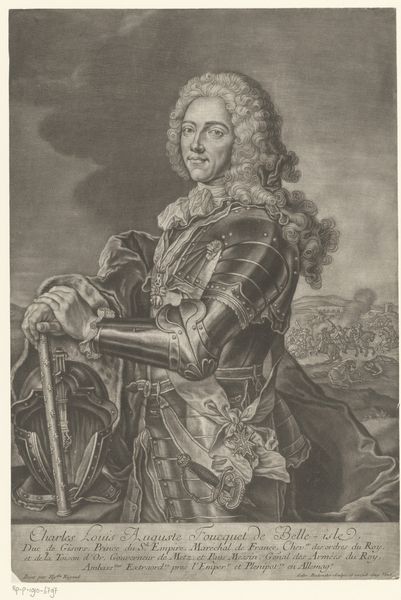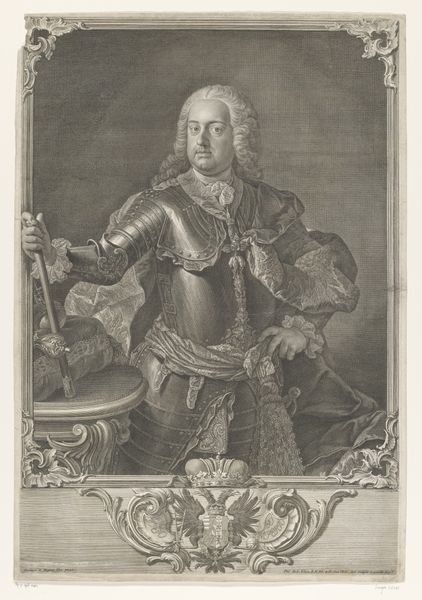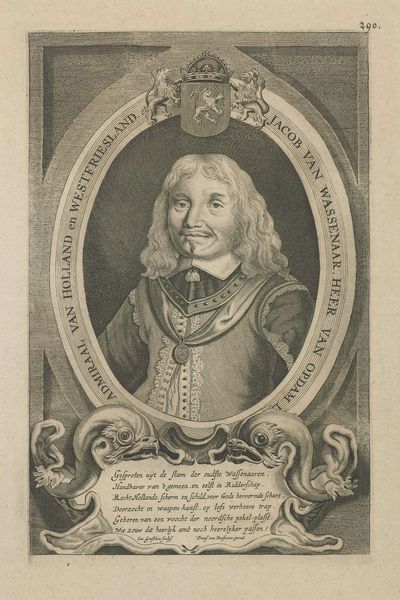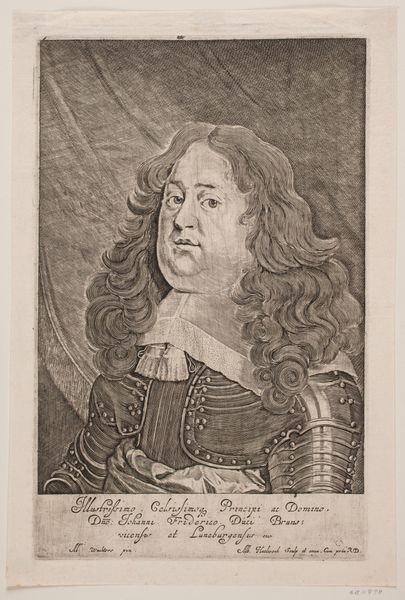
Portrait of Cardinal-Infante Ferdinand of Austria 1705 - 1738
0:00
0:00
drawing, print, engraving
#
portrait
#
drawing
#
baroque
# print
#
engraving
Dimensions: Sheet (Trimmed): 10 5/8 × 7 3/4 in. (27 × 19.7 cm)
Copyright: Public Domain
Editor: So, this is a portrait of Cardinal-Infante Ferdinand of Austria, an engraving created sometime between 1705 and 1738. I’m immediately struck by the contrast: the finery of his clothing and that intense stare suggesting both power and a certain melancholy. How would you interpret this portrait within its historical context? Curator: That's a keen observation! It's crucial to understand how prints like these functioned in society. Engravings weren't just decorative; they served as powerful tools for disseminating images and shaping public perception. Considering Ferdinand’s role as both a Cardinal and military leader, how might this image have been used to project his authority and legitimacy? Editor: I suppose these prints helped solidify his image as both a religious and political leader in the public consciousness. So this portrait is trying to convey legitimacy and power? Curator: Exactly. Notice the details: his armor, lace collar, even the way the light falls on his face. All carefully orchestrated to present a specific persona. Do you think such images were distributed to specific locations or people, maybe to build alliances or intimidate rivals? Editor: Definitely. Given the level of detail and skill in the engraving, it must have been targeted at other people of high social standing, or members of court, or other places of power where this image would remind everyone of Ferdinand's authority. Curator: Precisely! It's worth investigating the circulation routes of these prints. Who owned them, where were they displayed, and how did they contribute to the broader political landscape? Considering these distribution systems, what do you make of the use of images as a form of statecraft? Editor: That's a lot to think about. Seeing this piece less as just a pretty portrait and more as an early form of political messaging completely changes how I view it! Curator: Indeed. Analyzing art through the lens of social and political forces allows us to uncover its hidden meanings and understand its lasting impact. Editor: Thanks, that shifted my perception of the image a great deal!
Comments
No comments
Be the first to comment and join the conversation on the ultimate creative platform.

